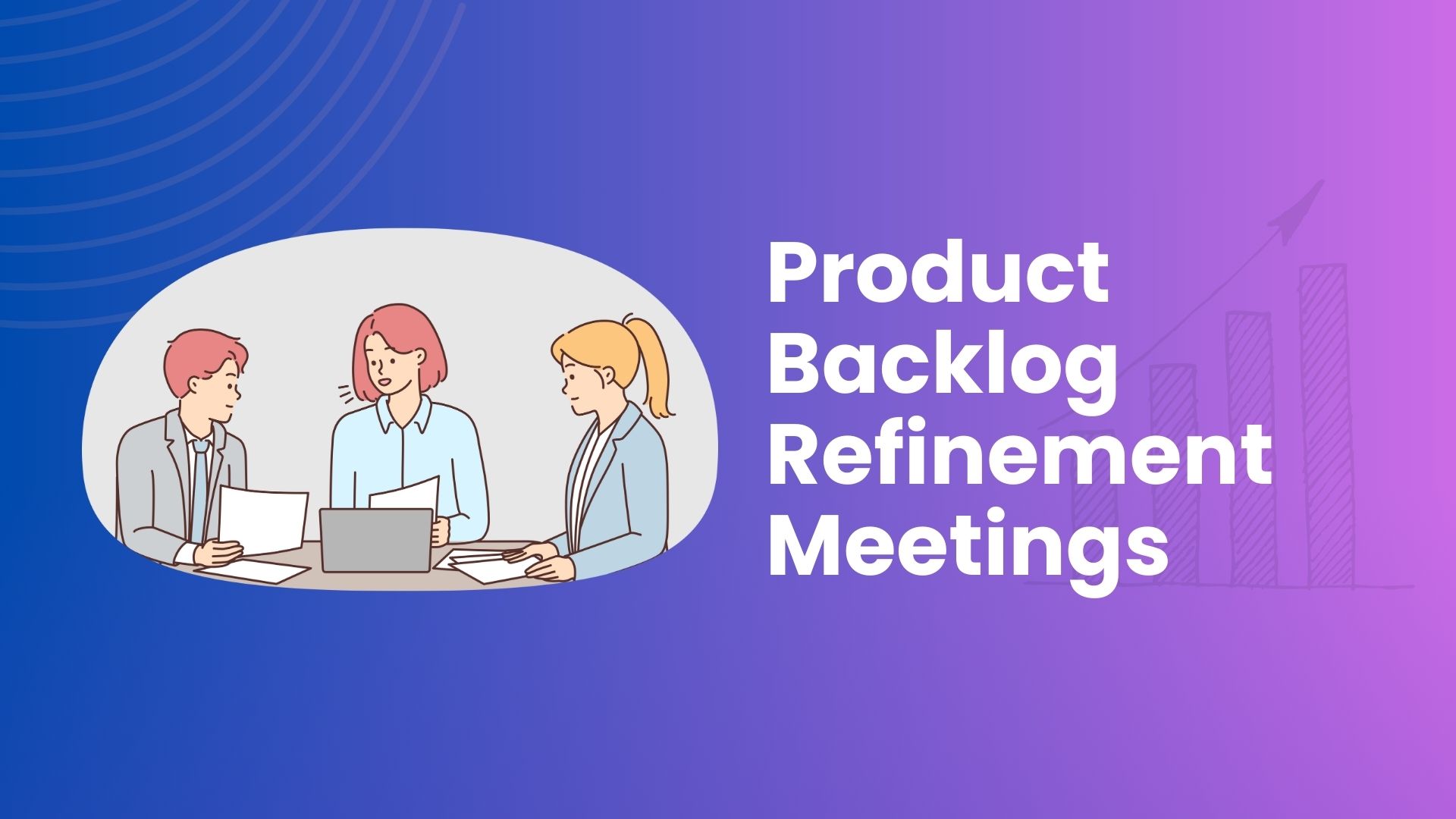Product Backlog Refinement Meetings
Agile project management relies heavily on a well-organized and efficiently managed product backlog item (and backlog fully) that guides the development team towards delivering maximum value to the customer. However, achieving such a backlog requires regular attention, collaboration, and a structured process. Backlog grooming meetings, also known as refinement sessions, play a vital role in achieving this. In this blog post, we'll explore the essentials of backlog refinement meetings and explore how they contribute to the success of agile teams. What does it mean to the product owner, and product manager; When is the best time for backlog refinement; and what key takeaways from planning sprint backlog?

The Significance of Backlog Refinement Meetings
Product Backlog: The Backbone
Before diving deep into backlog refinement meetings, let's understand the significance of the product backlog itself. The product backlog is a dynamic list of features, user stories, enhancements, and bug fixes that represent the work to be done in a project. It serves as a repository of ideas and requirements, continuously evolving as the product takes shape.
Backlog Refinement: A Continuous Process (agile project management)
Agile / Scrum project management emphasizes flexibility, adaptability, and collaboration. Product backlog grooming is a perfect example of these principles by ensuring that the product backlog remains in a state of constant improvement. Typically held once per sprint, these sessions help agile teams prepare for the upcoming work and maximize the efficiency of sprint planning meetings.
The perfect time for backlog refinement
The question often arises: When is the perfect time for backlog refinement? The answer, as widely recommended in agile methodologies like Scrum, is once per sprint. Although the product owner and the development team decide on this timing, it is better to have it once per sprint as refining your product backlog is required in agile frameworks.
Why backlog grooming should be once per Sprint?
-
Alignment with Sprint Planning (sprint planning): Conducting backlog refinement sessions once per sprint aligns perfectly with the sprint planning process. It ensures that the product backlog is well-prepared and up-to-date before the team commits to work for the upcoming sprint.
-
Maintaining Flow (sprint, agile): Having this regular cadence helps maintain a steady flow of work throughout the project. It prevents the backlog from becoming overly cluttered, allowing the team to focus on what's most important for the next sprint.
-
Time for Consideration (backlog grooming, backlog refinement meeting): Allowing a week or two between refinement meetings and sprint planning gives the team time to consider and discuss backlog items thoroughly. This ensures that each item is well-understood, estimated, and refined to meet the "Definition of Done."
-
Capacity Planning (development team): The frequency of once per sprint allows the development team to allocate the necessary capacity for the upcoming work. Estimations and discussions during refinement meetings help in making informed commitments for the sprint.
-
Flexibility (ongoing process): Agile is all about adaptability. Holding refinement meetings once per sprint provides flexibility. If new high-priority items emerge or changes are required, the team can adjust the backlog accordingly during the sprint.
Key Takeaways for Effective Product Backlog Refinement Session
Now, let's explore the essential takeaways that make backlog refinement meetings a vital component of agile project management.
- Regular Cadence (sprint planning, agile): Backlog refinement meetings should follow a regular cadence, typically aligning with the sprint planning schedule. Conducting these sessions consistently ensures that the backlog remains up-to-date and relevant.
- Prioritize (prioritize): Prioritization is at the heart of backlog refinement. The product owner, supported by the team, should prioritize items based on their business value, alignment with project goals, and customer needs.
- Clear Acceptance Criteria (acceptance criteria): Every user story or backlog item discussed in the meeting should have clear acceptance criteria. These criteria define what it means for a particular item to be considered 'done' and provide a shared understanding among the team.
- Estimation (sprint, development team): Collaborative estimation helps in understanding the effort required for each item. Using techniques like story points or time-based estimates, the team can plan the capacity for the next sprint effectively.
- Team Involvement (scrum team, team member): Effective backlog refinement meetings involve the entire team, including the product owner, development team, and relevant stakeholders. This ensures that everyone shares a common understanding of the work to be done.
- Splitting and Refining (backlog item, user stories): Sometimes, user stories or backlog items can be too large or complex. During these meetings, the team should consider breaking them down into smaller, more manageable pieces to facilitate smoother development.
- Adaptability (ongoing process, backlog refinement meeting): Agile project management is inherently adaptable. Be prepared to adapt the backlog based on changing priorities, customer feedback, and market conditions.
- Documentation: Keeping records of discussions, decisions, and changes made during the meeting is essential. This documentation serves as a valuable reference for the team and ensures transparency.
- Focus on Value (business value): The primary goal of backlog refinement is to maximize business value. Ensure that the prioritized items align with the overarching project goals and provide value to the customer.
- Collaboration (scrum master, sprint review): Foster a collaborative and respectful environment during the meeting, where team members can freely express their ideas and concerns. The scrum master plays a crucial role in facilitating this collaboration.
Conclusion
The purpose of backlog refinement meetings is the key that keeps the development process agile, flexible, and customer-centric. By following these key takeaways, agile teams can ensure that their product backlog remains well-prepared and optimized for the upcoming sprint, leading to successful project outcomes and satisfied customers. So, embrace the power of backlog refinement meetings and watch your agile projects flourish.